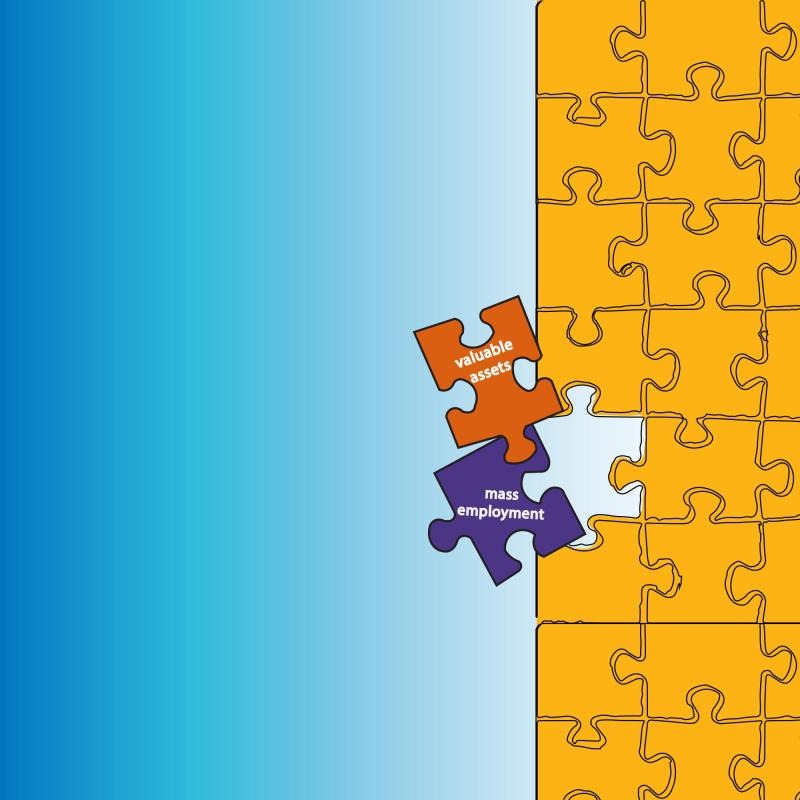Do public works programmes create valuable assets for livelihoods and resilience? A retrospective study of the impacts of assets for natural resource management in Ethiopia and Kenya
This report sets out to see if it is possible to assess the impacts PWP assets have on people’s livelihoods in order to learn new lessons about how, when — or whether — to use PWP.

Billions of dollars are spent on public works programmes (PWPs). Wage transfers to poor or food insecure people typically form around half the budget. The additional costs of supervision and construction materials are justified by the benefits that the works are expected to create.
Yet those benefits, the impacts of these assets on people’s livelihoods are never studied, meaning that lessons are not being learned about how, when — or whether — to use PWP.
Using mixed methods in two case studies (in Ethiopia, public works for soil and water conservation on hillsides in North Wollo; in Kenya, works for earth dams for water access in Makueni County), we set out to test whether it was possible to assess the impacts on the livelihoods and resilience of local people of assets that had been created by PWPs three to five years earlier. Having identified little impact, we asked what caused the weak performance of said PWP assets.
Findings include:
Assets from the PWPs had made almost no contribution to people’s livelihoods. This is despite selecting projects for study because they were believed to be successful by the implementing organisations. Evidence contradicted assumptions that the assets had achieved impact.
Earth dams in Kenya had not improved access to water because design and construction were so poor they only retained water when other water sources were also available.
Soil and water conservation in Ethiopia had made a visible environmental difference, but this did not provide an economic benefit to the vast majority of farmers.
The causes of failure were the same in both countries: at every stage in the project cycle, project planners and managers prioritised absorbing labour to justify wage payments, rather than creating assets that would generate benefits.
Policy implications:
Prioritising labour absorption and wage payments is common in PWPs, illustrated by the lack of evaluation of constructed assets. The failings found in these case studies are likely replicated by many PWPs throughout the world, wasting billions of dollars and having a negative impact on the livelihoods of poor and food insecure people.
PWPs need to show: that the assets they create will be of good quality and generate long-term benefits, and that the programmes are cost-effective ways of constructing those assets.
This needs to be demonstrated before PWPs are approved, and then monitored. If these requirements cannot be met, then unconditional transfers should be the preferred option.
It is common to publish atypical success stories from PWPs. This is dangerous because it reinforces, rather than tests, assumptions about the value of PWP assets. Taking these stories at face value leads to the continued use of PWP in ways that may be inappropriate and wasteful. This undermines learning from experience: it impedes collective understanding of when to use PWPs and how best to design them.